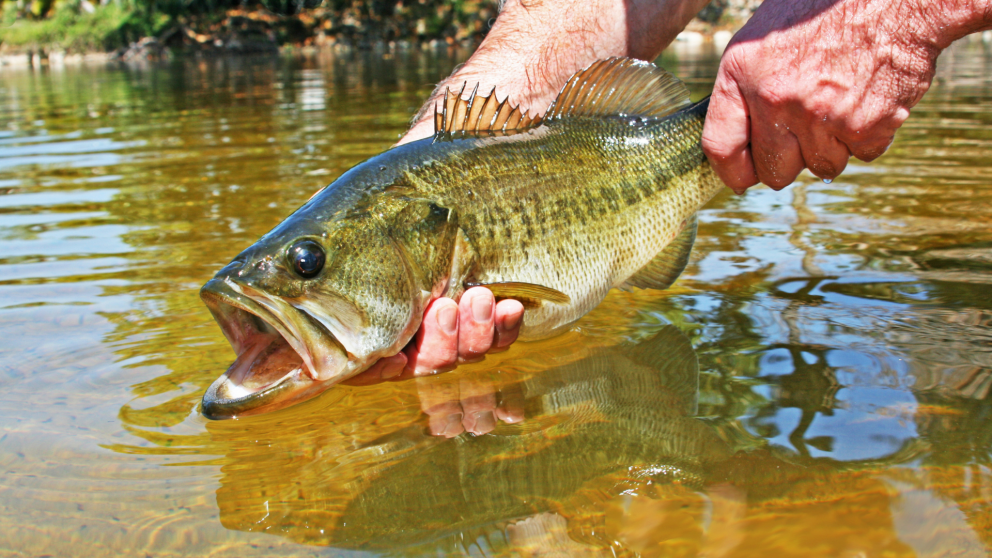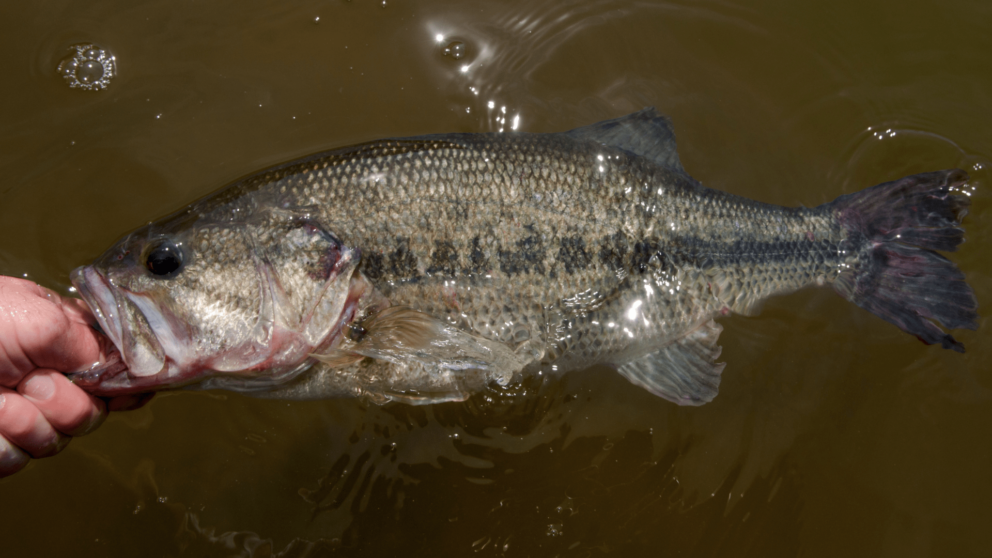- SCIENTIFIC NAME
- Micropterus salmoides
- CLASSIFICATION
- Fish
- LIFE SPAN
- 8-23 Years
- SIZE
- 3-26” | 1-12lbs
- STATE CONSERVATION STATUS
-
- Unprotected
- FEDERAL CONSERVATION STATUS
- Least Concern
- GAME STATUS
- Game
- Washoe
- Humboldt
- Pershing
- Churchill
- Mineral
- Lyon
- Douglas
- Carson City
- Storey
- Elko
- Lander
- Eureka
- White Pine
- Esmeralda
- Nye
- Lincoln
- Clark
Habitat & Range
Largemouth Bass
are native to most of the eastern half of North America and have been stocked
extensively throughout the continent. They are abundant in lakes, reservoirs,
and ponds throughout Nevada. They
prefer slow moving, clear waters with soft, shallow substrates. Dense
vegetation not only allows them to escape predators, but also to be one.
Threats
- Herons
- Larger Fish
- LMBV- Largemouth Bass virus
Natural History
As the Largemouth Bass grows, its food will change from zooplankton and insects to primarily eating other fish. They typically take their food at the surface in the morning and evening. Mid-day takes them to the water column and water’s bottom to find their prey. The Largemouth relies on its sight to feed rather than on the vibrations of its prey’s movement. Spawning in late spring to mid-summer, the nest is prepared by the male and guarded for several days after the eggs have hatched. Females of the species are frequently larger than then males and can produce from 2,000 to 90,000 eggs in a season.
Fun Facts














